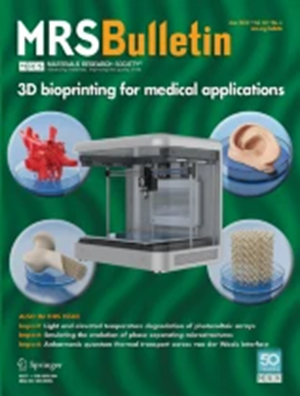Materials Science of High-Level Nuclear Waste Immobilization
IF 4.9
3区 材料科学
Q2 MATERIALS SCIENCE, MULTIDISCIPLINARY
引用次数: 272
Abstract
With the increasing demand for the development of nuclear power comes the responsibility to address the issue of waste, including the technical challenges of immobilizing high-level nuclear wastes in stable solid forms for interim storage or disposition in geologic repositories. The immobilization of high-level nuclear wastes has been an active area of research and development for over 50 years. Borosilicate glasses and complex ceramic composites have been developed to meet many technical challenges and current needs, although regulatory issues, which vary widely from country to country, have yet to be resolved. Cooperative international programs to develop advanced proliferation-resistant nuclear technologies to close the nuclear fuel cycle and increase the efficiency of nuclear energy production might create new separation waste streams that could demand new concepts and materials for nuclear waste immobilization. This article reviews the current state-of-the-art understanding regarding the materials science of glasses and ceramics for the immobilization of highlevel nuclear waste and excess nuclear materials and discusses approaches to address new waste streams.高放核废料固定化的材料科学
随着对发展核能的需求日益增加,解决废物问题的责任也随之而来,包括以稳定的固体形式固定高放核废料以临时储存或处置在地质储存库中的技术挑战。50多年来,高放核废料的固定化一直是研究和发展的一个活跃领域。硼硅酸盐玻璃和复杂的陶瓷复合材料的发展,以满足许多技术挑战和当前的需求,尽管监管问题,这在很大程度上因国家而异,尚未得到解决。开发先进的防扩散核技术以关闭核燃料循环并提高核能生产效率的国际合作项目可能会产生新的分离废物流,这可能需要新的概念和材料来固定核废料。本文综述了玻璃和陶瓷材料科学在高放核废料和过量核材料固定化方面的最新进展,并讨论了解决新废物流的方法。
本文章由计算机程序翻译,如有差异,请以英文原文为准。
求助全文
约1分钟内获得全文
求助全文
来源期刊

Mrs Bulletin
工程技术-材料科学:综合
CiteScore
7.40
自引率
2.00%
发文量
193
审稿时长
4-8 weeks
期刊介绍:
MRS Bulletin is one of the most widely recognized and highly respected publications in advanced materials research. Each month, the Bulletin provides a comprehensive overview of a specific materials theme, along with industry and policy developments, and MRS and materials-community news and events. Written by leading experts, the overview articles are useful references for specialists, but are also presented at a level understandable to a broad scientific audience.
 求助内容:
求助内容: 应助结果提醒方式:
应助结果提醒方式:


